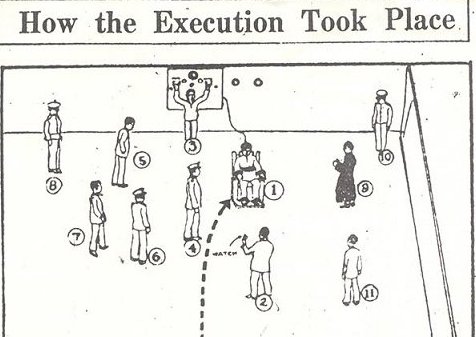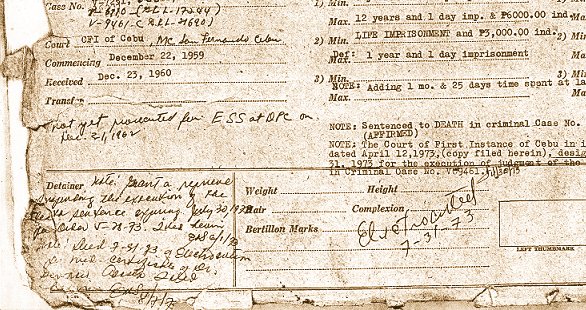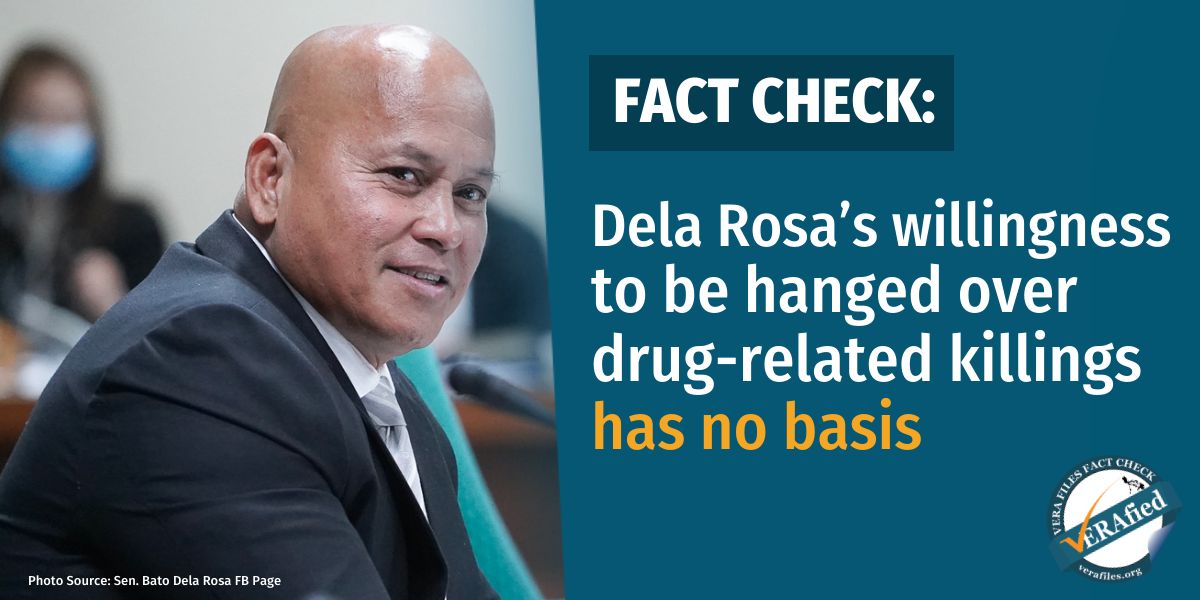(Conclusion)
(This article was first published on July 15, 2019. We are reposting this as the public weighs in on the bills filed restoring death penalty.)
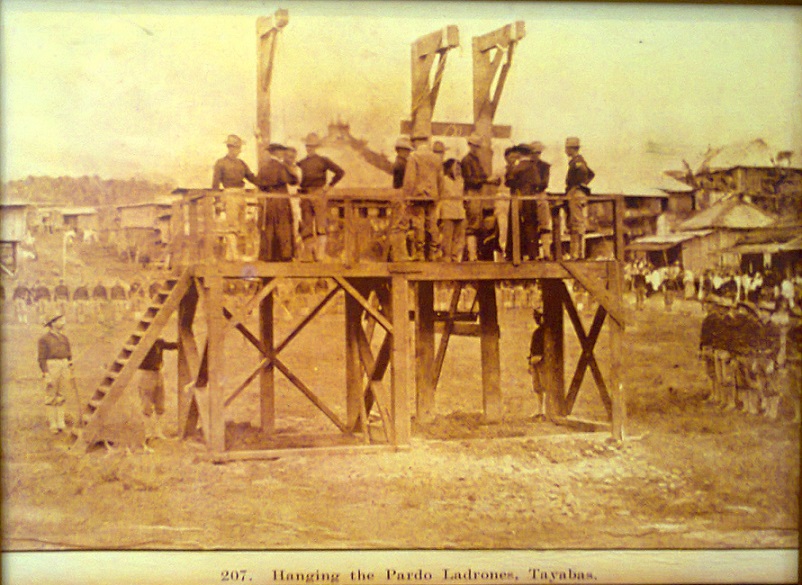
Hanging the Pardo
Ladrones, Tayabas, circa 1900. (Original photograph at the Museo
Sugbo. Photo taken by Joel Ariarte, Jr.)
Killing Them
Softly
The history of
the death penalty in the Philippines in the 20th century is the
history of the state’s pursuit to clinically execute convicts. The
political leaders may all have wanted to act tough on criminals, yet,
in the execution chamber, the functionaries of the state went to
great lengths to relieve or mask the pain for the convict in the
course of an execution. They did not always succeed.
Hanging is
supposed to kill convicts not by choking them to death, but by
breaking their neck during the drop. But as described in John White’s
account, it became an excruciating ordeal, with at least three people
humping, and pulling at, the convict’s body just to ensure a quick
death. The garrote is supposed to be an improvement on hanging.
Instead of breaking the neck in an unsure manner, the garrote, at a
turn of a screw, will snap the spinal cord and detach the neck from
the skull, leading to instantaneous death. As with hanging, the
actual practice differed from the mechanical calculations. An account
by Felix Roxas, a curious child in the closing days of the Spanish
empire, recalled seeing the faces of convicts on public display after
being garroted with “protruding tongues” and “open eyes”
bearing the marks not of snapped spinal cord but of “strangled
necks.”
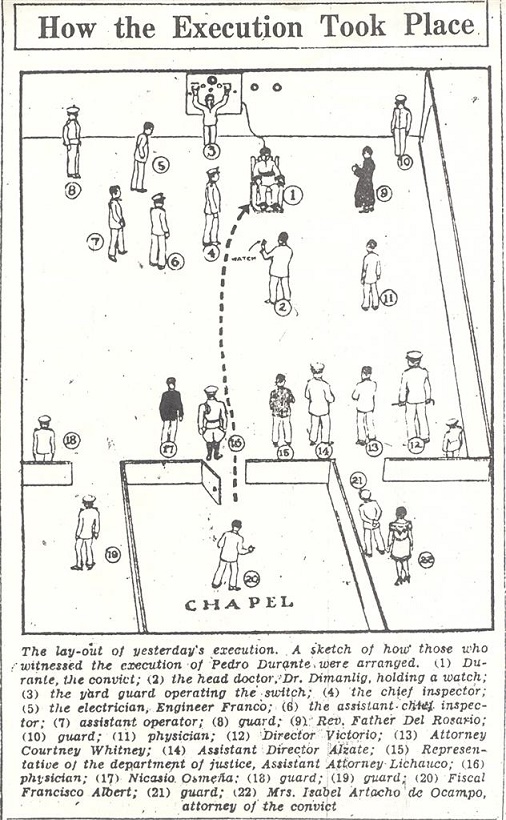
How the execution
took place. Drawing that appeared in the Philippines Herald, 24
September 1929.
The electric
chair
Then in 1923 came
the electric chair. Mariano Jesus Cuenco, the author of Philippine
Legislature Act (PLA) 3104 that changed the method of execution from
hanging to electrocution, firmly believed that the electric chair
will kill the convict instantaneously, unlike the excruciating death
that hanging offered, which to him is “ignominious and barbaric.”
Cuenco’s
legislation even bears this provision that eventually became Article
81 in the Revised Penal Code:
“The death
sentence shall be executed with preference to any other and shall
consist in putting the person under sentence to death by
electrocution. The death sentence shall be executed under the
authority of the Director of Prisons, endeavoring so far as possible
to mitigate the sufferings of the person under sentence during
electrocution as well as during the proceedings prior to the
execution. If the person under sentence so desire, he shall be
anaesthetized at the moment of the electrocution.”
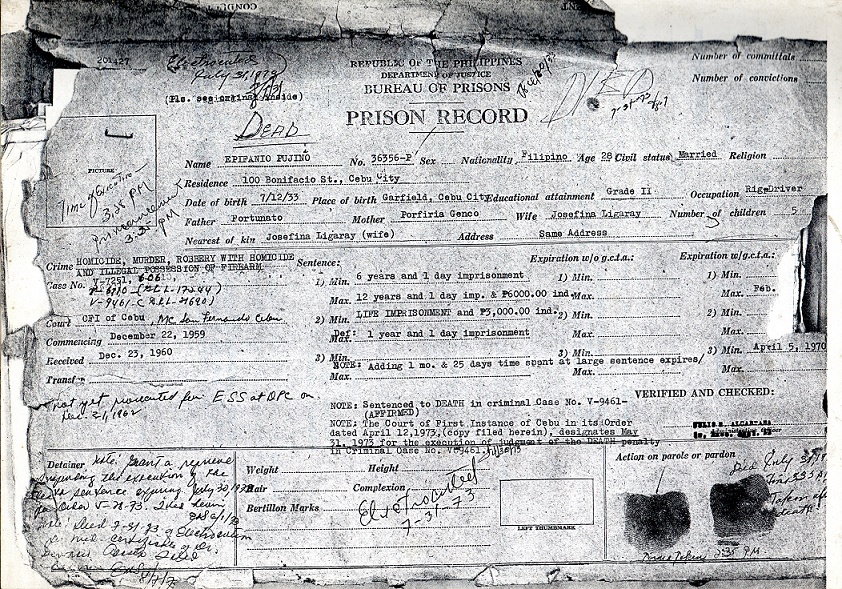
Prison record of
Epifacio Pujino indicating that he was sentenced to death by
electrocution on 31 July 1973, the first of a dozen executions during
Marcos’s martial law. (From the Joel Ariate, Jr.’s research files.
Of the 85 convicts that died in the electric chair, 17 requested to be
anesthetized. Of equal number were those who refused any anesthesia.
Some of them were advised by their priests to shun anesthesia for
them to be clearheaded in their prayer in the last moments of their
lives. The accounts or records of the other executions made no
mention whether the convicts were given drugs to dull the pain of
death.
Death in the
electric chair was, no doubt, painful and gruesome. The physician and
the executioner would often coordinate to make sure that outward
signs of pain were muted. As retold by Dr. Ricardo V. de Vera, a
physician who served at executions in the New Bilibid Prisons from
1959 until the ‘70s:
“Seeing
everything is all set, I watch carefully the man strapped on the
seat. His breathing is labored, and I can see very well the rising
and falling of his chest as he respires. Inspire. Expire. Inspire.
Expire. At the exact moment of expiration, I press the buzzer. A
fraction of a second later two switches, one real and the other a
dummy, simultaneously close permitting electric current to slam
through the body of the doomed man. He shakes violently, the face and
the body contort, his skin blackens, and an eerie sound emanates from
the chair. But no sound comes from his lips because the lungs are
devoid of air. After 3 minutes the current is switched off, and the
body slumps with a thud.”
But there were
botched executions. On April 28, 1950, Alejandro Carillo had to be
electrocuted twice before he was declared dead; an electrical
malfunction happened during the execution. A number of convicts
literally burned in the electric chair. The smell of burning flesh
tested the endurance of the witnesses; more so when there were
successive executions in a day. On December 28, 1951, a journalist
passed out after witnessing three executions in a span of 22 minutes.
Emiterio Orzame Jr., however, showed extraordinary strength; when he
was about to be executed on March 31, 1967, he ripped out the leather
restraints and jumped out of the chair.
Dwight
Conquergood, a scholar on how death penalty is performed, argued:
“Botched
executions knock down the ritual frame and expose the gruesome
reality of actually putting a human being to death. The illusion of
nonviolent decency is torn away. Botched executions also are the
stuff of sensational news stories and political embarrassments.
Graphic images and grisly reports of botched executions erode the
public faith in the ‘ultimate oxymoron: a humane killing. To
prevent embarrassing glitches and disruptions, modern executions have
become ever more controlled, engineered, and bureaucratized
performances.’”
Lethal injection
At present, the
use of lethal injection is the epitome of this kind of death work.
The 1987
Constitution merely suspended the imposition of the death penalty by
saying that “neither shall death penalty be imposed, unless, for
compelling reasons involving heinous crimes, the Congress hereafter
provides for it.” And, in 1994, Congress did provide for the
reimposition of the death penalty for certain heinous crimes by
virtue of Republic Act (RA) 7659. The preferred method of execution
in RA 7659 is the gas chamber. But two years after the law took
effect, the government was not able to build one. Going back to the
electric chair was out of the question. Besides its documented
cruelty, the execution chamber housing it was, in a rare display of
poetic justice, hit by lightning and burned down on July 8, 1986.
In 1996, RA 8177
amended both RA 7659 and Article 81 of the Revised Penal Code; it
provided for lethal injection as the means of execution. Seven
convicts were killed via lethal injection from February 5, 1999 until
January 4, 2000. Then on June 24, 2006, Congress passed RA 9346,
effectively abolishing the death penalty.
In the 76 years
spanning the first execution in the electric chair on June 25, 1924
until the last execution via lethal injection, the state had claimed
92 lives. Their executions should have been object lessons promoting
fear and docile citizenship. But the state was caught in a bind. It
can get rid of monsters but it cannot be perceived as imposing the
death penalty in a monstrous manner. This provided the convicts with
ways to reassert their humanity.
Marcial “Baby”
Ama, upon his execution on October 4, 1961, donated whatever was left
of his earthly belongings to the Home for the Aged and Infirm. In the
1960s, several executed convicts donated their eyes for those needing
transplant. Casimiro Bersamin, a Bataan veteran and a convicted
murderer, asked that he be shown the Philippine flag as his last wish
during his execution on July 21, 1951. Leo Echegaray, convicted child
rapist, had a wedding on December 28, 1998; he was the first to be
executed by lethal injection on February 5, 1999. Others simply
walked to their death with all the calm and dignity that they could
muster.
It is the height
of irony for the public to learn not contempt and terror, but a
lesson in human dignity offered by a criminal condemned to death.
Instead of witnessing the end of monstrosity of a criminal life, the
public sees the monstrosity of its government.
A look at the
history of the killing of convicts in the Philippines yields the
lesson that a state relying on murder as a tool to impose its
authority is weak and insecure, and unremoved from the very barbarity
it would like to extirpate. The monstrosity of the criminal will be
just a mirror image of the monstrosity of the state.
As Polish
sociologist and philosopher Zygmunt Bauman argued, the “audacious
dream of killing death”—the act of preserving society from the
“dangerous classes”—turns into the practice of killing people.”
Aren’t we
already doing that?
(Joel F. Ariate
Jr. is a university researcher at the Third World Studies Center,
College of Social Sciences and Philosophy, University of the
Philippines Diliman.)
